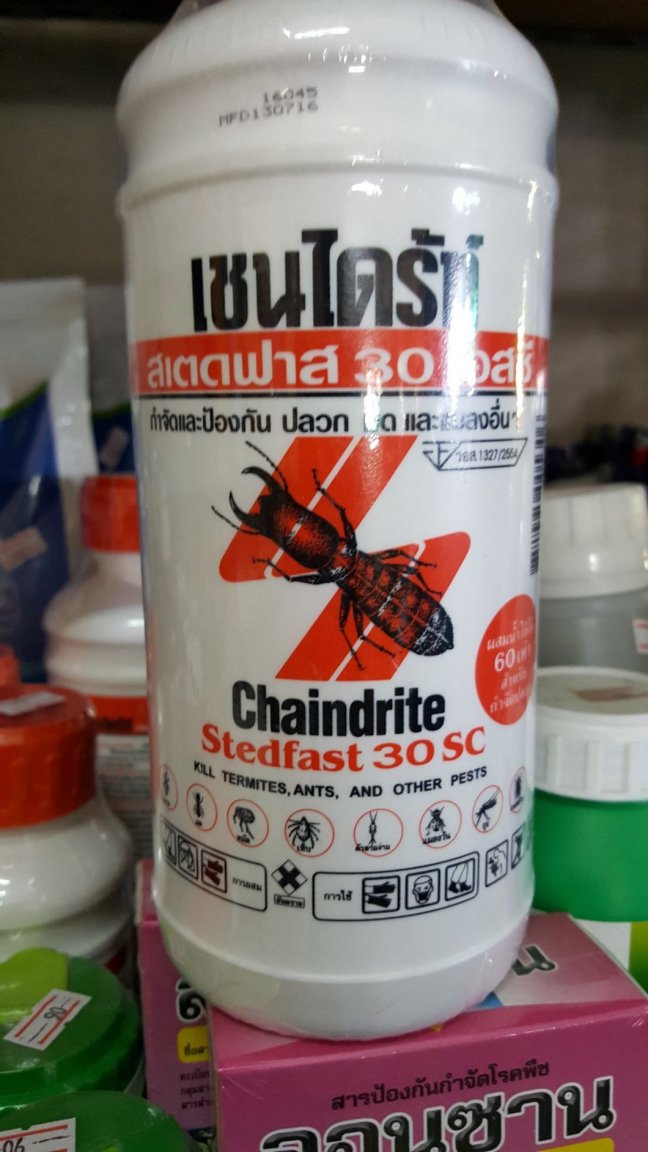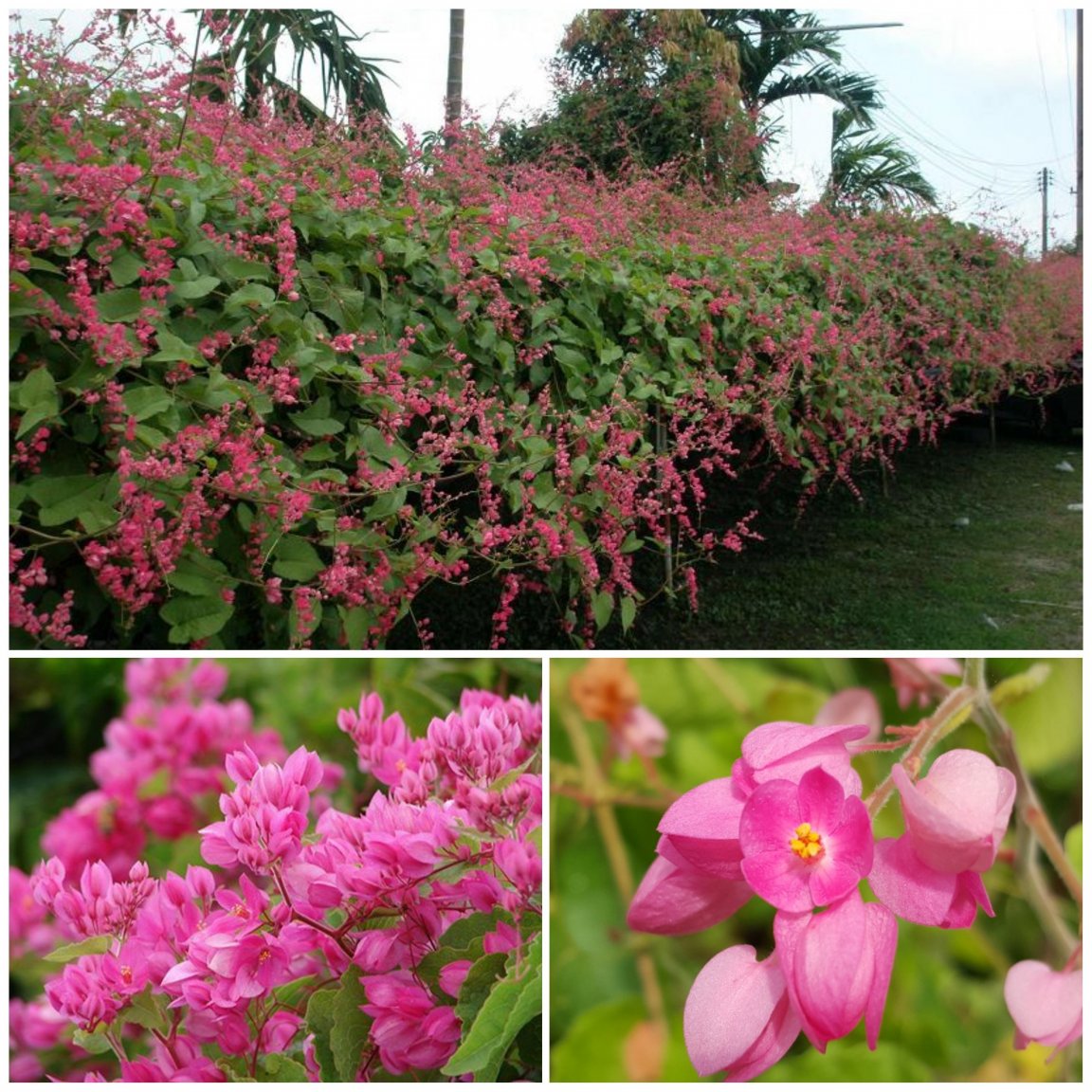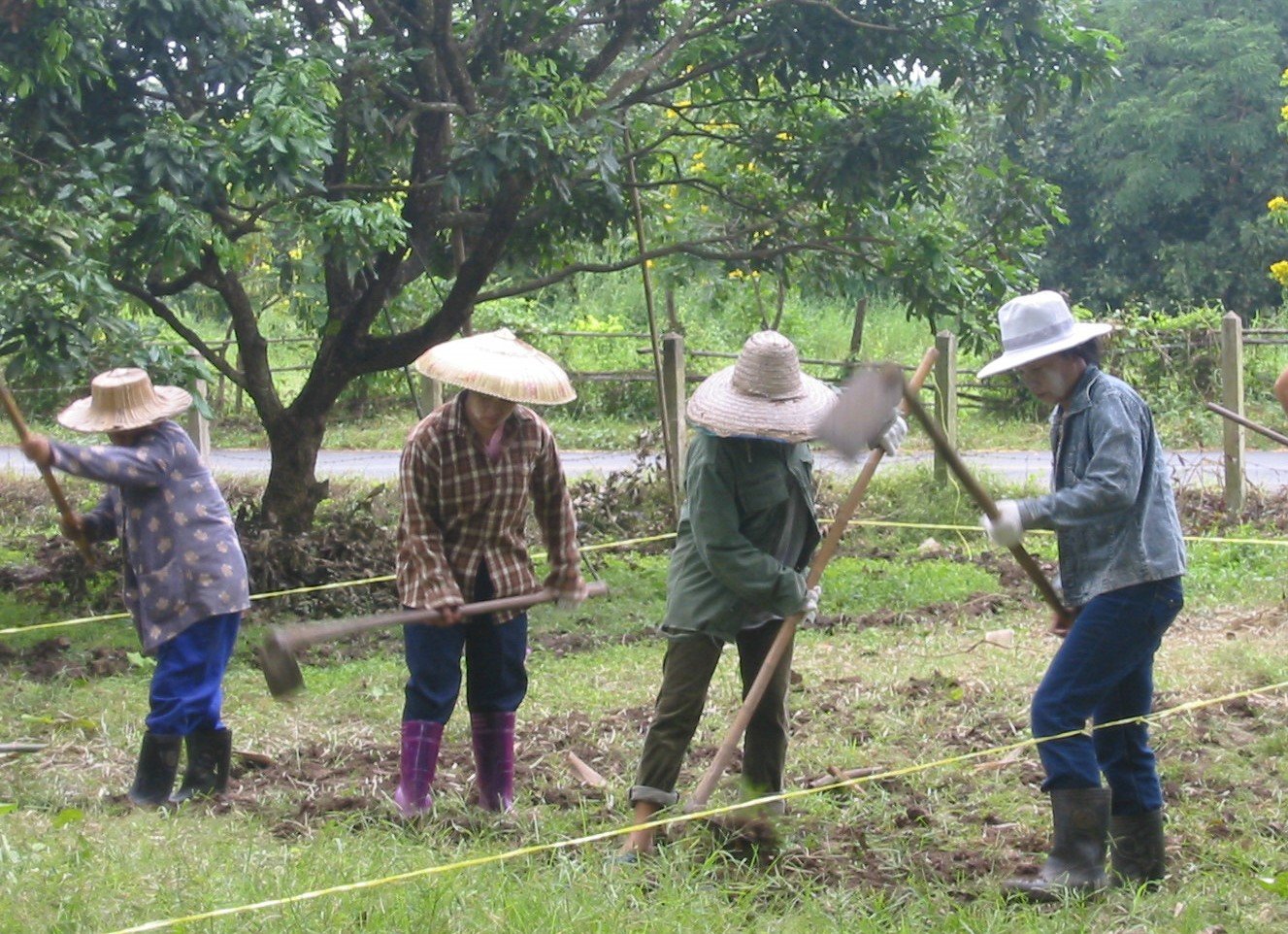
drtreelove
-
Posts
1,933 -
Joined
-
Last visited
Content Type
Events
Forums
Downloads
Quizzes
Gallery
Blogs
Posts posted by drtreelove
-
-
First of all, recognize that growing from seed you will not be guaranteed of fruiting and or that the fruit will be true to the variety that you ate and enjoyed. Vegetatively propagated, grafted trees are the only way to ensure the chosen variety. But you can have a good learning experience with soil preparation and management, planting, pruning, watering through the hot, dry season which is coming right up.
If you decide to go for it, then I recommend that you first do some YouTube viewing to help prepare for what you are getting into, the size of the trees, space and management that should be considered. TM Durian Farmer from Kanchanaburi on the River Kwai is enthusiastic and shares a lot of good information on his YT channel.
https://www.youtube.com/results?search_query=tm+durian+farmer
He's not an organic grower, and in my opinion has some built-in problems that will develop with chemical management, crude pruning technique and watering practices that will exacerbate disease issues and early decline in the long run, but it's a good overview with some important information for durian growers.
Personally I wouldn't be putting a lot of money into an unknown seedling variety, but if you are going all-out, consider a hemp grow kit for each of your seedlings, from Maruchu Bussan: https://maruchubussan.co.th/product/hemp-grow-kit/
At least get their potting soil and excellent hydrolysed fish fertilizer, Takumi Fish Amino Fertilizer .
Upgrade your six-inch seedlings, each into a 2 to 5 gal pot and grow in partial shade until a meter tall or more before planting out. They will need to be in full sun for the final location, but it looks like you will be planting in the ground during the hottest, driest time of year, so a diligent watering program will be vital, and maybe some temporary shade cloth coverings.
Appropriate watering is critical, not too much or too little, and that takes some experience to get it right. Durian trees are highly susceptible to a fungus-like pathogen called a water-mold - Phytophthora spp root and crown rot. Avoid watering directly on the tree trunk and root crown, and avoid overwatering and excessive frequency. Cover cropping and/or mulching can help build soil organic matter content, soil aggregate structure, soil moisture retention, and nutrient cycling.
I hope that helps, Don
-
 1
1
-
-
On 10/29/2024 at 4:08 AM, NotEinstein said:
I used to use GobalHouse but prefer DoHome (on 11 - 88/8 Village No. 3, Umong Subdistrict, Mueang Lamphun District, Lamphun Province 51150), which is bigger with much more stock and choice.
Yes DoHome is awesome, and usually less expensive than the other home improvement superstores mentioned, depending on what you are buying. But no one of them has it all, I still shop around. And not only at the superstores, our local mom/pop hardware-materials shop often has just what we need.
-
Chaindrite Stedfast 30SC. 30 ml of the concentrate per liter of water. The active ingredient is bifenthrin, a potent pyrethroid with residual effectiveness (the pest won't return for awhile). It's a contact insecticide, not systemic, won't penetrate durian fruit. It will get an immediate knock down of the sucking insect pest, and ants. (Don't spray the soil, only the tree trunks and foliar canopy,) Use a 'spreader-sticker' adjuvant. Use PPEs, cover skin, long sleeves, long pants, gloves and mask. Respirator not required.
Permethrin, cypermenthrin or other pyrethroids would be similar and just as effective.
Pyrethroids classs of chemical insecticides are based on the chemistry of the naturally occuring extract from a Chrysanthemum flower, called pyrethrum or pyrethrins. Pyrethrins are just as strong for 'knockdown', but biodegrade in 12 to 24 hours (which is why it is considered 'organic program compatible'. ) You can use the organic product, if you can find it, but it will be much more expensive, and it won't have the residual effectiveness of bifenthrin.
Pyrethroids are relatively low toxicity for mammals, people and pets, but are highly toxic to fish, keep away from ponds and waterways. "Good fauna" will be killed also. But you can work on restoring that with an organic program, after the acute infestation is controlled.
This approach and pyrethroid chemistry is not organic, but then neither is your entire management program or your trees would not have this plant pest. Healthy plants grown on healthy soil don't get pests or diseases. Physiological stress, from poor growing conditions, poor water management, and nutrient deficiencies will make plants susceptible to pests. Soil fertility and good water management will help trees develop natural resistance to pests and disease. Avoid high NPK, high salt index chemical fertilizer, which creates a pest magnet.
Insecticidal soap, wood vinegar, lemon grass concentrate, rosemary, cloves and other botanicals are organic options, but will require repeat spraying every week until pest infestation is controlled.
-
 1
1
-
-
See SBF's post on page 3 of the Regenerative Ag discussion that he iniiated. Posted August 7, 2020
Cover cropping is becoming much more widely known and appreciated as an important practice for soil building.
https://kisstheground.com/education/resources/cover-crops/
Please share if you find sourcing for cover crop seed mixes in Thailand.
SBF is developing some but I believe its primarily for export. Another inactive forum member's company is Best Garden State. They were starting to develop seed mixes but ran into regulatory issues for imports, requiring chemical treatments for imported seeds.
-
I don't know exact ID, but it appears to be superficial on soil and fallen plant material, due to the wet conditions you have noted. I don't think it's powdery mildew and does not appear to be a plant pathogen. It will likely clear up as the dry season proceeds. I would regard it as "nature's way" of seasonal decomp. It may be a good thing, and beneficial for soil building with your red gravel that appears to be deficient of soil organic matter content.
But keep an eye on it. If you notice the growth on the living plant parts, then re-post some new pics and we may be able to recommend an organic program fungicide like Potassium bicarbonate. Don
-
 1
1
-
-
On 10/21/2024 at 9:46 AM, degrub said:
Ladybugs, if you can get them, will eliminate mealybugs and aphids, etc in a few days. Usually takes a couple releases a few days apart plus another after about a week to clear up new hatchings.
keep the ladybugs refrigerated between uses.
I don't want to discourage biololgical control efforts, but I'm not sure that this is realistic. "If you can get them" is a key term, and if you can release enough numbers (repeatedly) to adequately feed on the pest population for a short time before the ladybugs fly away. And "new hatchings" is another key term. Advanced infestations are difficult to control. Preventive management is preferred. Why are the mealybugs there in the first place? Healthy plants grown on healthy soil don't get pests and diseases.
-
On 8/11/2024 at 9:53 PM, cooked said:
Cure it or prevent it? Usually, an oil-based insecticide is recommended. Neem oil will probably do it.
The bugs seem to attack plants that are enfeebled by drought and /or heat. Even in the rainy season I pay attention to watering, especially to pot plants but also younger plants, vegetables.
Good points! And enfeebled also by nutrient deficiencies and reduced natural resistance to pests.
Oily residue and the smell of neem oil is objectionable to some gardeners and for some edible plants.
Mealy bugs can be water-jet sprayed off to greatly reduce numbers, and also on some types of plants can be rubbed off with a rag or cotton-glove.
I recently used an insecticidal soap solution to knock down mealy bug infestations (and ants along with it) on some customer's plants. Then biofertilized to begin building soil, plant health and resistance.
Homemade Insecticidal Soap Recipe
The simplest insecticidal soap is nothing more than a 2% soap solution. To make this at home, you will need:
- Sprayer: Any clean spray bottle or garden sprayer will work fine for spraying insecticidal soap. Make sure the sprayer or bottle hasn’t been used for herbicides.
- Pure Soap: Use a pure liquid soap, such as Castile, or all-natural soap. The active ingredient in insecticidal soap comes from the fatty acids in animal fat or vegetable oil, so it’s important to use the real thing. Don’t use detergents (which aren’t actually soaps), dish soaps, or any products with degreasers, skin moisturizers, or synthetic chemicals. Dr. Bronner’s Pure Castile Soap is usually pretty easy to find in stores, or check your local natural-foods store for other options.
- Pure Water: Tap water is fine for making insecticidal soap. If you have hard water, you may want to use bottled water to prevent soap scum from building up on your plants.
To make homemade 2% insecticidal soap, mix together:
- 5 tablespoons soap to 1 gallon of water
OR
- 1 heavy tablespoon soap to 1 quart of water
Homemade Insecticidal Soap Recipe Variations
Like any other home remedy, there are as many variations on this recipe as there are gardeners! You can also try:
- Diluted Solution: If the spray causes damage or burns your plant foliage, cut the amount of soap in half and try a 1% solution. This is the concentration usually found in commercial sprays. The lighter solution might be less effective but is gentler on plants.
- Cooking Oil: To help the solution stick a little longer, add two tablespoons of light cooking oil (such as corn, canola, olive, or safflower) per gallon of water to the mix.
- Vinegar: To make a spray that also targets powdery mildew, add a teaspoon of cider vinegar per gallon of water to the mix.
- Garlic or Pepper: To help repel chewing insects, add a teaspoon of ground red pepper and/or garlic per gallon of water to the mix.
- Bar Soap: For a less-exact recipe, drop a bar of pure soap (such as organic bar soap or Ivory) into a gallon of water and leave it overnight. Remove the bar and shake well before spraying.
-
Comfrey grows like magic! It is a remarkable plant with amazing vigor, regenerative properties and a multitude of uses. There are controversial issues around human and livestock health and toxicity that you should look into. In Thailand is is not well-known or widely used, or available. It may be idealistic to consider cultivating it, unless you have sourcing for seeds or are patient and dedicated in propagating from your one plant.
I don't know about comfrey in southern Thailand, but I've grown it in California, Chiang Mai and in southern India (Tamil Nadu Coramandel Coast) where there are double-whammy monsoon deluge seasons like southern Thailand. There we cultivated it on burms surrounding organic field crops, for biological control - pest predator habitat, and production of biomass for mulching and compost. Tuberous comfrey is used for ground cover, but knowing what I do now, I would prefer a mixed species cover crop for soil-building in an orchard or palm plantation.
Cover-cropping orchards and vineyards - Dr Christine Jones
https://youtu.be/PJs8GU1cG30?si=aKmMgXp1oCSDH112
Good on you if you are cover cropping for soil building in an oil-palm plantation. Our oldest daughter works in the palm oil industry in Chumphon and lives at her partner's familly plantation. I've seen firsthand the popular use of 0-0-60 fertilizer. Yes the large palm fruit has a high demand for potash, like durian. But the use of Potassium chloride is short-sighted and one of the worst things that you can do for soil and plant health. Repeated use is detrimental to the benefical soil biology and represents one of the worst aspects of chemical farming and soil degradation. Which of course can contribute to reduction of natural resistance to plant pests and diseases.
-
On 10/5/2024 at 4:31 AM, fieldsofgreen said:
not sure if moisture laden banana trees would clog it up.
Yes, wet and stringy, fibers will wrap cutters and shaft and clog. Only a larger chipper will do it.
https://vermeerthailand.com/wp-content/uploads/2021/10/bc700xl-brush-chipper-spec-sheet-updated.pdf
https://vermeerthailand.com/contact-us/
Cost-effective alternative: chop and drop (cut and leave lay) for mulch. add manure for fertility.
What variety are you growing? What province?
-
 1
1
-
-
-
- Popular Post
- Popular Post
On 7/29/2024 at 9:43 PM, cooked said:Generally, planting tomatoes during or just before the rainy season is just asking for trouble. I have some cherry tomatoes under a roof, planted in bought in soil, but I'm not hoping for much. I have lovely soil but I, along with others in the village, am unable to successfully cultivate any members of the nightshade family, apart from chilli. Probably verticillium wilt, which BScTreelove will inevitably tell you is due to poor soil management, and then recommend some exotic product from the USA. You do realise that mentioning specific members will sort of annoy people like me?
Generally in Thailand, there isn't a sowing / planting season, it's a matter of are you willing to water when necessary, is for instance, planting watermelons just before the long, dry season starts, a good idea? Sorry DrTree.
And being rude and disrespectful will annoy some others.
-
 1
1
-
 2
2
-
Vegetables are grown successfully all over Thailand. But as with the nurturing of all living things, vegetables, trees, shrubs, grass, soil, as well as children and pets, the first attempts will be a learning experience. Don't give up, you learn as you go.
Sowing seeds directly into the ground may not be the best idea, unless you know how to prepare the soil. Poor soil conditions are prevalent, seeds and seedlings need special nutritional support to germinate and get established. It's hard to find vegetable 'starts' (young plants) in Thailand, but not impossible. I recommend that you start seeds in small pots or flats, and while they are germinating and putting out new leaf surface and roots, you can start preparing the soil or obtaining some quality potting soil for containers. https://maruchubussan.co.th/
Start with some easy to grow veggies, like pole beans (yard-long beans, tua pak yao), Chinese kale (pak ka nah).
Water management is all-important.
YouTube is loaded with channels. Good luck sorting it all out. SelfSuffientMe that was mentioned is a good one.
This book has some good guidelines on the comprehensive (multi-faceted) program it takes to be a successful grower: https://www.amazon.com/How-Grow-More-Vegetables-Ninth/dp/0399579184
-
Is anyone in Thailand using the new Direct Express debit card to receive SS benefits? I know that with an ATM withdrawal there is a 3% fee on top of the bank charges, but what about a bank teller cash withdrawal with the Direct Express MasterCard? Do we have to give up the same 3%?
-
22 hours ago, shdmn said:
Cold pressed coconut oil is the healthiest inexpensive oil for cooking in Thailand, but it's smoke point is a bit low at 175C. Virgin avocado oil is a bit higher so that would be better but it's expensive. Non virgin olive oil or non virgin avocado oil are probably the best inexpensive for cooking but they are not that healthy for you. Better than seed and vegetable oils though. Those are supposedly very unhealthy because of high levels of Omega 6.
Clarified butter, also called ghee, is probably the best most healthy cooking oil with a relatively high smoke point. No idea how easy or inexpensive that is to find in Thailand.
No need to find it, it's easy to make your own ghee from butter.
https://www.thepioneerwoman.com/food-cooking/recipes/a91575/how-to-make-ghee/
-
On 7/14/2024 at 8:18 AM, JeffersLos said:
Thanks, I will consider bananas.
Are there any other fruit trees that should be successful in such an environment?
With the description of the site and expectations "The bigger the trees the better" - lime, papaya, and other fruit trees may not get tall enough, soon enough to gather the sunlight needed for photosynthesis, and in my opinion they are more challenging for an inexperienced grower to manage tree health and disease resistance. These are severely compromised growing condtions. Don't expect it to be easy to maintain fruit tree health and longevity.
-
 1
1
-
-
Consider bananas. That is what I have used in a similar situation. It was cheap and easy and the results of this planting have been very satisfying. I was gifted with dwarf nam wah banana offshoots from a friend's organic farm. (kluai nam wa (กล้วยน้ำว้า).
Any woody tree selection will take longer to grow and acheive the height to gather afternoon sunlight for photosynthesis. And trees in containers is a 'short term' plan, they cannot grow to maturity in a healthy way, in such a limited soil volume. Bananas in an improved soil (compost and COF/complete organic fertilizer), in the ground preferably, will grow fast and start to produce bananas in a year.
-
 1
1
-
-
4 hours ago, djayz said:
Your comment about the nematodes and molds reminded me of something I forgot to mention in my previous post. I rotate my tomato plats every year (by that I mean I plant them in a different grow bed every year). This helps to prevent a buildup of diseases in the soil.
Crop rotations can be an important consideration in a comprehensive Integrated Pest Management program. But I plant tomatoes in the same beds. I know that most soil dwelling nematodes, bacteria and fungi, protozoa and microarthropods are beneficial, so I don't want to kill off the good guys by wiping out all the soil biology with baking, harsh chemistry, or other forms of sterilization. I know from my experience in my own gardens over the years and that of hundreds of customers, that "preventing a buildup of diseases in the soil" comes best with soil fertility and good water management, creating good growing conditions for beneficial soil biology to thrive and suppress the pathogens and help the plants build natural resistance pests and diseases.
-
 1
1
-
-
The pink flowering vine that you like may be 'coral vine' Antigonon leptopus. I don't know the Thai name. It's incredibly beautiful, but very fast growing and voluminous, often considered "invasive"; be sure that you have enough space to accomodate the vigorous growth habit, and that you have the ability to manage continuous training-pruning.
Seeding and planting can begin as the weather heats up in mid-February, as long as you have water/irrigation, because that's the beginning of the dry-hot season. Without irrigation, wait until the rainy season starts in May.
-
 1
1
-
-
In my opinion, ditch the herbicides and do a manual weed removal for the least-toxic and best long term results. If you want to plant grass and flower beds, the best method would be a dedicated process of removing the existing weedy growth by digging or rototilling, Rake it smooth and deep water or wait for heavy rains to saturate the soil. Weed seeds will germinate and grow back. Dig or rototill them again before they go to seed. Repeat one more time for best measure. Then prepare the soil to a 6" depth by incorporating compost and a complete organic fertiliizer. Overlay with new sod. Then the ongoing weed management will be limited to spot pulling of new weeds and cultivation of your new turf grass, which will eventurally dominate and squeeze out most of the weeds. Mulch the flower beds for some degree of weed suppression, but keep up with weekly weed pulling or digging. It can be enjoyable work and satisfying results if you keep up with it, and if you don't mind getting a little sweaty, tired and dirty.
-
 1
1
-
-
Order "Takumi Organic Super Soil" from Maruchu Busan. They have 25 kg sacks. https://maruchubussan.co.th/
Mix with a high quality vermicompost from Best Garden State or other source.
I also use Maruchu Fish Amino Fertilizer.
Kind of pricey stuff, but worth it.
-
-
On 6/19/2024 at 9:53 PM, IvorBiggun2 said:
Its a 'Lime Caterpillar'. You can spray your citrus with Bacillus thuringiensis. It's a commercially available biological control for caterpillars on citrus.
It's a good suggestion, but some other information is important for effective contol.
There are different strains of B.t., not all are effective for butterfly larvae.
"Common types of Bt strains: Bt israelensis controls immature mosquitos, flies, and gnats. Bt aizawai and Bt kurstaki controls caterpillars of moths and butterflies." National Pesticide information center.
Also, from my experience it is most effective with 1st and 2nd instars, maybe 3rd, not 4th and 5th stages of caterpillar growth. Later instars are bigger and tougher and not as easily affected.
Also, Bt is not a contact spray, it has to be ingested by caterpillars actively feeding on the foliage to which the Bt has been applied, preferrably with a spreader-sticker adjuvant to keep it in place. A lite spreader-sticker may not be enough during the rainy season, a heavier sticker-extender may be needed. The insect life-cycle timing considerations are important. If you are too late, its a waste.
I would add pyrethrins/pyrethrum as a highly effective knockdown spray (organic program compatible, biodegrades in 12 to 24 hours).
For small plants, djayz suggestion of mechanical control, hand picking, is good, and no cost or spraying. Wood vinegar for me would be a last resort, not a regular application. It's very harsh and I'm concerned about preserving the foliar microbiome and beneficials.
-
I think you have it backwards. The reason for sad looking trees and the reason that the insect pests are attracted to the trees is inadequate plant nutrition, and often poor growing conditions and water managment. Physiological weakening from drought stress is an invitation to many plant pests.
Permacuture, manure, compost and mulch do not necessarily cover all the bases in builiding soil health, plant nutrition and natural resistance to pests. In fact manure, too much manure, especially non-aged/non-composted manure can have detrimental effects on the beneficial soil biology and nutrient cycling.
-
I haven't seen that specific pest damage, but the hole pattern looks like weevil damage. More important than what exact pest is causing it, is why is it there?
Plant pests and diseases are many, and there are new ones that are hard to keep up with. If its not one thing it will be another, as long as the trees are physiologically weak and have not developed natural resistance.
The foliage shown in the photos is chlorotic (pale, yellowed), most likely from nutrient deficiencies and/or excessive pruning with heading cuts. Use thinning cuts/drop-crotching and don't over-prune, which creates excessive vegetative growth that is attractive to pests. High NPK chemical fertilizer also creates biochemistry that is a pest magnet.
Create good growing condtions, build soil organic matter content and a healthy soil microbiome, soil surface shading, mulching, cover cropping, and attend to soil fertility and water management as the first line of defense. Building the tree's natural resistance to pests and disease, protecting and enhancing the soil and foliar biome and beneficials should always be the focus for optimum tree heath care. Look to regenerative agriculture and soil food web principles. Use biologicals and not harsh chemicals.




Starfruit problem
in Farming in Thailand Forum
Posted
Possible anthracnose fungus disease. (Colletotrichum gleosporoides)
Starfruit is also known as carambola tree, Averrhoa carambola. Search for info and images to identify the condition and get tips on culture.
A quick-fix spray application for advanced infections is not feasible. Covering, netting may not be appropriate or effective. Preventive management is best. Build natural resistance to disease by addressing plant health with good growing conditions, soil fertility and water managment.